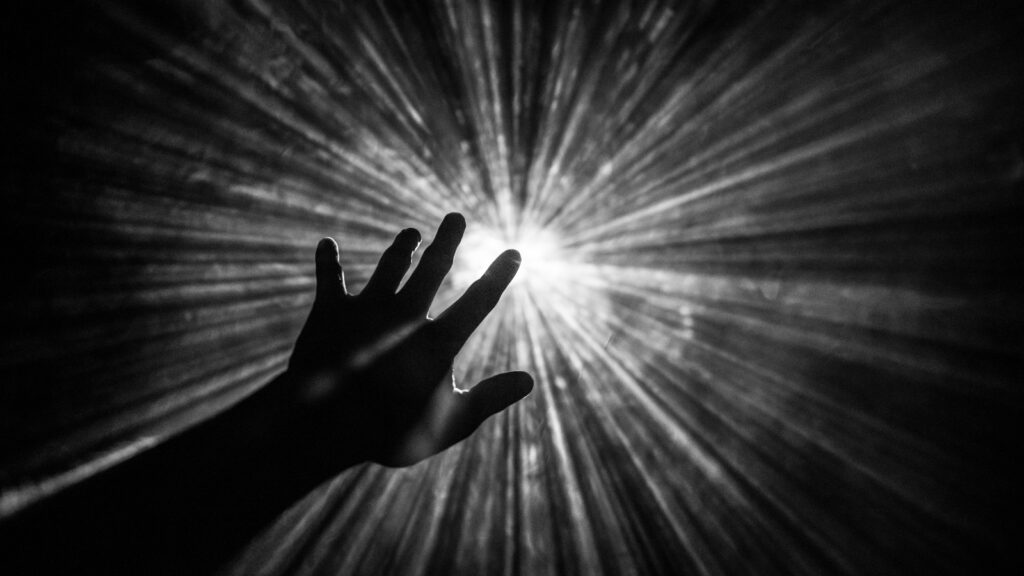The following is excerpted from Paranormality, available now on Kindle.
On the face of it, out of body experiences appear amazing. During these episodes, people feel as if they
have left their body and are able to fly around without it, with many being
convinced that they have found out some information that they couldn’t possibly
have known otherwise. Many people report seeing their actual body during the
experience, with some commenting on a strange kind of ‘astral cord’ linking
their floaty self to their real self. Surveys suggest that between ten and twenty
percent of the population has had an OBE, often when they are extremely
relaxed, anaesthetized, undergoing some form of sensory deprivation such as
being in a floatation tank, or on marijuana (bringing a new meaning to the term ‘getting high’).
What is the explanation for these strange sensations? Are people’s
souls really drifting away from their earthbound bodies? Or are these
light-headed moments the result of our brains playing tricks on us? And, if
that is the case, what does that say about where we are the rest of the time?
The strange case of the spiritual sneakers
Open nearly any book
about out-of-body and near-death experiences and you will soon read about Maria
and the worn-out tennis shoe.
In
April 1977 a migrant worker named Maria from Washington state suffered a severe heart
attack and was rushed into Harborview Medical Centre. After three days in
hospital Maria went into cardiac arrest, but was quickly resuscitated. Later
that day she met with her social worker, Kimberly Clark, and explained that
something deeply strange had happened during the second heart attack.
Maria
had undergone a classic out-of-body experience. As the medical staff worked to
save her life, she found herself floating out of her body and looking down on
the scene seeing a paper chart spewing out from a machine monitoring her vital
signs. A few moments later she found herself outside the hospital looking at
the surrounding roads, car parks and the outside of the building.
Maria
told Clark that she had seen information that
she could not have known from her bed, providing descriptions of the entrance
to the emergency ward and the road around the hospital building. Although the
information was correct, Clark was initially
sceptical, assuming that Maria had unconsciously picked up the information when
she had been admitted to the hospital. However, it was Maria’s next revelation
that made Clark question her own scepticism.
Maria
said that at one point on her ethereal journey she had drifted over to the
north side of the building, and that an unusual object on the outside of a
third floor window ledge had caught her attention. Using her mind power to zoom
in, Maria saw that the object was actually a tennis shoe, with a little more
zooming revealing that the shoe was well worn and the laces were tucked under
the heel. Maria asked Clark if she would mind
seeing if the tennis shoe actually existed.
Clark
walked outside the building and looked around, but couldn’t spot anything
unusual. Then she went up to the rooms in the north wing of the building and
looked out of the windows. Apparently this was easier said than done, with the
narrow windows meaning that she had to press her face against the glass to see
onto the ledges. After much face pushing Clark
was amazed to see that there was indeed an old tennis shoe sitting on one of
the ledges.
‘Fifteen-love’ to the
believers.
As Clark
reached out onto the ledge and retrieved the shoe she noticed that it was
indeed well worn and that the laces were tucked under the heel.
‘Thirty-love.’
Moreover, Clark noticed that the position of the laces would only
have been apparent to someone viewing the tennis shoe from outside the
building.
‘Forty-love.’
Clark published Maria’s remarkable story in 1985 and
since then the case has been cited in endless books, magazine articles and
websites as watertight evidence that the spirit can leave the body.
In
1996 sceptic scientists Hayden Ebbern,
Sean Mulligan and Barry Beyerstein from Simon
Fraser University
in Canada
decided to investigate the story. Two of the trio visited Harborview Medical
Centre, interviewed Clark and located the
window ledge that Maria had apparently seen all of those years before. They
placed one of their own running shoes on the ledge, closed the window and stood
back. Contrary to Clark’s comments, they did
not need to push their faces against the glass to see the shoe. In fact, the
shoe was easily visible from within the room and could even have been spotted
by a patient lying in a bed.
‘Forty-fifteen.’
Next, the sceptics wandered
outside the building and noticed that their experimental running shoe was
surprisingly easy to spot from the hospital grounds. In fact, when they
returned to the hospital one week later the shoe had been removed, further
undermining the notion that it was difficult to spot.
‘Forty-thirty.’
Ebbern, Mulligan and
Beyerstein believe that Maria may have overheard a comment about the shoe while
sedated or half-asleep during her three days in hospital, and then incorporated
this information into her out-of-body experience. They also point out that Clark didn’t publish her description of the incident
until seven years after it happened, and thus there was plenty of time for it
to have become exaggerated in the telling and retelling. Given that key aspects
of the story were highly questionable, the trio thought that there was little
reason to believe other aspects of the case, such as Maria saying that the shoe
was well-worn prior to its discovery, and the lace being trapped under its
heel.
‘Deuce’
Just a few hours at the
hospital revealed that the report of Maria’s infamous experience was not all
that it was cracked up to be. Despite this, the story has been endlessly
repeated by writers who either couldn’t be bothered to check the facts, or were
unwilling to present their readers with the more sceptical side of the story.
Those who believed in the existence of the soul were going to have to come up
with more compelling and water-tight evidence.
‘New balls please.’
How to feel like a rubber hand
The infamous case of the
tennis shoe on the ledge provides less than compelling evidence for the notion
that people are able to float away from their bodies. Worse still, several
researchers invested a considerable amount of time and effort conducting more
rigorous tests of the notion and also drew a blank. For example,
parapsychologist Karlis Osis tested over a hundred people who claimed that they
could induce an OBE at will, asking each to leave their body, travel to a
distant room and identify the randomly selected picture that had been placed
there. The vast majority of his participants were confident that they had made
the trip but as a group they scored no better than chance. Similarly,
researcher John Palmer and his colleagues from the University
of Virginia in Charlottesville used a variety of
relaxation-based techniques to train people to have OBEs and then asked them to
use their new-found ability to discover the identity of a distant target. In a
series of studies involving over 150 participants, the experimenters failed to
detect any reliable evidence of extrasensory perception.
In
short, the best anecdotal cases studies of OBEs turned out to be a tad
unreliable, and experiments involving hundreds of OBEers attempting to identify
thousands of hidden targets failed to yield convincing results.
After
all of this, it might appear that out of the body experiences have nothing to
offer the curious mind. However, subsequent work has adopted a very different
approach to the problem and, in doing so, both solved the mystery and provided
an important insight into the innermost workings of your brain.
How do you know where you are? Or, to
put it in slightly more philosophical language – why do you think that you are
inside your own body?
It
many ways, it seems like an odd question. After all, we seem to be inside our
bodies and that is that. However, the question has hidden depths. Perhaps the
greatest insights have come from a ground-breaking
experiment that you can recreate in your own home using just a table, a large coffee table book, a towel, a rubber hand
and an open-minded friend.
Start by sitting at the table and placing both of your arms on the
tabletop. Next, move your right arm about six inches to the right and place the
rubber hand where your right hand used to be. Now stand the book vertically on the tabletop
between your right arm and the rubber hand, ensuring that it prevents you from
seeing your right arm. Then use the towel to cover the space between your right
hand and the rubber hand. Finally, ask
your friend to sit opposite you, extend their first fingers and use them to
stroke both your right hand and the rubber hand in the same place at the same
time. After about a minute or so of stroking you will start to feel that the
rubber hand is actually part of you.
To
explain what’s going on here, let’s use a simple analogy. Imagine walking
around in a new city
and suddenly realizing that you are lost. The only way forward is to go hunting
for a signpost. Similarly, when your
brain is trying to decide where ‘you’ are it has to rely on the equivalent of
signposts, namely, information from your senses.
Most
of the time this works really well. Your brain might, for example, see your
hand and feel pressure from your fingertip, and so correctly assume that ‘you’
are in your arm. However, in the same way that people sometimes mess around
with signposts and point them in the wrong direction, so once in a while your
brain will mess up. The rubber hand experiment is one of those situations.
During the study, your brain ‘feels’ your left hand being stroked, ‘sees’ a
dummy hand being subjected to simultaneous stroking, concludes that ‘you’ must
therefore be located in the dummy hand, and constructs a sense of self that is
consistent with this idea. In short, the sense of where you are is not hard-wired
into your brain. Instead, it is the result of your brain constantly using information from your senses to come up with a
sensible guess. Because of this, the sense of ‘you’ being inside
your body is subject to change at a moment’s notice.
It is one thing to convince people that part of them inhabits a
dummy hand, but is it possible to use the same idea to move a person out of
their entire body? Neuroscientist Bigna Lenggenhager, from
the École Polytechnique Fédérale de Lausanne in Switzerland, decided to investigate.
If
you were to take part in one of Lenggenhager’s studies you would be taken into
her laboratory, asked to stand in the centre of the room and fitted with a pair
of virtual reality goggles. A researcher would then place a camera a few feet
behind you and feed the output into your goggles, causing you to see an image
of your own back standing a few feet in front of you. Next an animated stick
would appear on the image in front of you and slowly stroke your virtual back.
At the same time the researchers would sneak up behind the real you and slowly
stroke your back with a highlighter pen, being careful to ensure that the
actual stroking matched the virtual stroking. The experimental set-up is
identical to the dummy hand and paintbrush study, but with the ‘virtual you’
taking the place of the dummy hand and a highlighter pen replacing the
paintbrush. In the same way that stroking the dummy hand produced the strange
sensation that part of you inhabited the hand, so Lenggenhager’s set-up
resulted in people feeling as if their entire body was actually standing a few
feet in front of themselves.
The
dummy hand and virtual reality experiments demonstrate that the everyday
feeling of being inside your body is constructed by the brain from sensory
information. Alter that information and it is relatively easy to get people to
feel as if they are outside of their bodies. Of course, people don’t have
access to rubber hands and aren’t wired into virtual reality systems when they
have out-of-body experiences. However, many researchers now think that this
strangely counter-intuitive idea is essential to understanding the nature of
these episodes.
Witchcraft, LSD and Tarot cards
Sue Blackmore’s interest
in the paranormal dates back to 1970 when she was a student at Oxford University
and had a dramatic out-of-body experience. After
several hours experimenting with the Ouija board and then relaxing with some
marijuana, Sue felt herself rise out of her body, float up to the ceiling, fly
across England, travel over
the Atlantic, and hover around New
York. Eventually she travelled back to Oxford, entered her body
through her neck and finally expanded to fill the entire universe. Other
than that it was a quiet night.
Upon
her return to reality, Sue became fascinated with weird experiences, trained as
a white witch, and eventually decided to devote herself to parapsychology. For
many years she examined the psychology of paranormal experiences and beliefs,
trying to figure out why people experienced seemingly supernatural sensations
and bought into such strange stuff. Most recently she has turned her attention
to the mystery of consciousness, focusing on the ways in which the brain
creates a sense of self (although, rather disappointingly, the ‘Who Am I’ tab
on her website delivers a straight biography).
However,
Blackmore is perhaps best known in sceptical circles for her work explaining out-of-body
experiences. She took as her starting point the notion that the feeling of
being located inside your body is an illusion created by your brain on the
basis of incoming sensory information. Then, in the same way that a rather
weird set of circumstances involving a dummy hand or a virtual reality system
can cause people to believe that they are elsewhere, Blackmore wondered whether
an equally strange set of circumstances might cause people to think that they
had floated away from their bodies. Sue focused her attention on two elements
that were central to most OBEs.
Sue realised that if you
present someone
with a constant sound, image, or smell and something very peculiar happens.
They slowly get more and more used to it, until eventually it vanishes from
their awareness. For example, if you walk into a room that smells of freshly
ground coffee, you quickly detect the rather pleasant aroma. However, stay in
the room for a few minutes, and the smell will seem to disappear. In fact, the
only way to re-awaken it is to walk out of the room and back in again.
Blackmore speculated
that this process was also central to OBEs. People tend to experience OBEs when
they are in situations in which their brains are receiving a small amount of
unchanging information from the senses. They are often robbed of any visual
information because they have their eyes shut or are in the dark. In addition,
they usually don’t have any tactile information because they are lying in bed,
relaxing in the bath, or are on certain drugs. Under these circumstances the
brain quickly becomes ‘blind’ to the small amount of information that is coming
in, and so struggles to produce a coherent image of where ‘you’ are.
Like
nature, brains abhor a vacuum, and so start to generate
imagery about where they are and what they are doing. That is part of the
reason why people are more likely to have images flowing through their mind
when they shut their eyes, are in the dark or take drugs. Blackmore hypothesized
that certain types of people would naturally find it easy to imagine what the
world looks like when you float out of your body, and also become so absorbed
in their imagery that they confused imagination for reality, and that these
individuals that would be especially likely to experience OBEs.
To
test her theory Blackmore carried out several experiments. In one of them she
asked people to imagine yourself being about six feet above where they actually
are, and rate the clarity of their imagery and the ease with which they
switched from one perspective to another. Sue presented this task to two groups
of people – those that had experienced an out-of-body experience and those that
had not – and obtained very different results. Those that had previously
experienced floating away from themselves tended to report much more vivid
images and found it much easier to switch between the two perspectives.
In
short, Blackmore’s data suggests that people who experience OBEs are much
better than others at naturally generating the type of imagery associated with
the experience, and struggle to tell the difference between reality and
imagination. Put these people in a situation where their bodies receive only a
small amount of unchanging information about where they actually are and, just
like the people taking part in the dummy hand and virtual reality experiments,
they can end up believing that they are no longer located inside their bodies.
Putting it all together
Research into out-of-body
experiences has revealed that your brain constantly relies on information from
your senses to construct the feeling that you are inside your body. Fool your
senses with the help of rubber hands and virtual reality systems, and suddenly
you can feel as if you are part of a table or standing a few feet in front of
your body. Rob your brain of these signals and it has no idea where you are.
Couple this sense of being lost with vivid imagery of flying around, and your
brain convinces itself that you are floating away from your body.
Your brain automatically and
unconsciously carries out the vitally important ‘where am I?’ task every moment
of your waking life. Without it, you would feel that you are part of the chair
you are sitting on one moment and in the floor the next. With it, you have the
stable sense of constantly being inside your body. Out-of-body experiences are
not paranormal and do not provide evidence for the soul. Instead, they reveal
something far more remarkable about the everyday workings of your brain and
body.
Teaser image by Alexandre Dulaunoy, courtesy of Creative Commons license.









